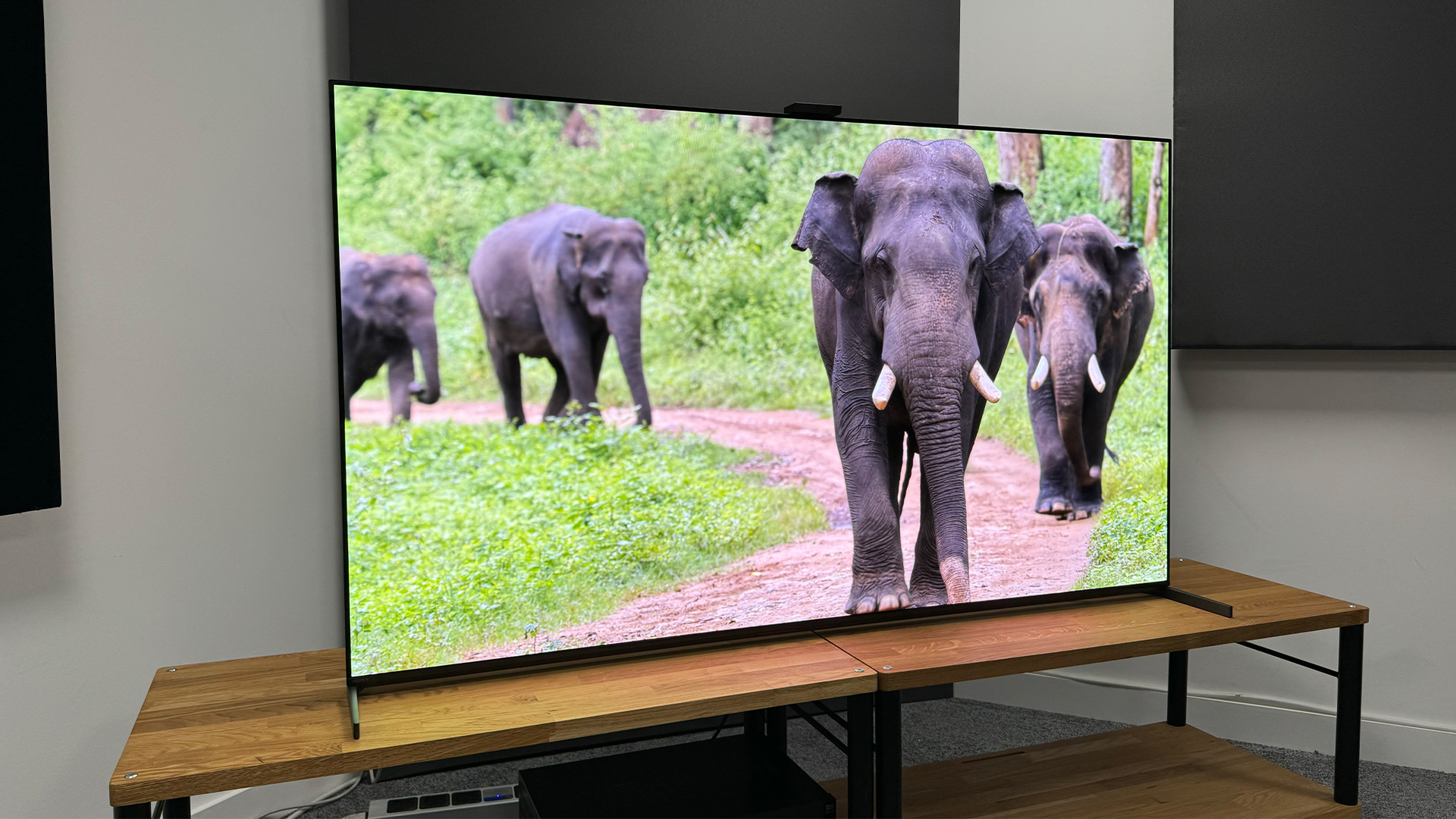
2023 has been one of the most interesting years for OLED TVs since I first became a professional shiny things chaser more than a decade ago.
But for me, there are two big reasons why 2024 could be an even bigger year for OLED TVs.
The first is that it’ll be the second round in Micro Lens Array (MLA) vs QD-OLED's ongoing grudge match.
On the off chance you haven’t read any of our recent TV reviews, MLA is a screen technology LG Display debuted on its flagship LG G3 OLED set a the CES 2023 tradeshow in Las Vegas in January.
The tech places a layer of microscopic lenses on top of the OLED pixels in a bid to radically boost max brightness levels. It’s the reason the G3 and other sets with it, which include the Panasonic MZ2000 and Philips OLED908, go up to a maximum of 2000 nits brightness. That’s a marked step up on the average 700 nits you’d see on a traditional OLED panel.
This puts it in direct competition with Samsung’s second-generation QD-OLED which has the same aim. The big difference is that QD-OLED aims to boost brightness by combining OLED with Samsung’s Quantum Dot screen technology instead of microscopic lenses. It has been used this year in the Samsung S95C and Sony A95L.
This led to some of the brightest OLEDs we’ve ever seen passing through our test rooms and some very heated debates among our testers when we were deciding the best TV winners in our 2023 What Hi-Fi? Awards.
And while the Sony A95L may have secured a win for QD-OLED in the first round of the fight, offering what our TV & AV Editor Tom Parsons described as “the new benchmark”, from what we’ve heard the battle’s far from over.
During our chats with LG and Philips’ engineers throughout the year, many have flagged the fact that this is their first outing with MLA and in many ways, they are still learning and figuring out how to truly make the most out of it.
This is why we’re expecting to see a wave of even more impressive MLA-powered sets make their debut at the CES 2024 tradeshow in January next year.
This would make sense as it would mirror what happened with QD-OLED, where the first-generation panels had a few early teething problems. This was apparent when we ran the first generation Sony A95K against the A95L. The A95L was noticeably more accurate and fixed our big gripe about the A95K – its tendency to overbake colours, particularly reds.
To be clear, if LG did the same with its fabled next flagship the LG G4, and ironed out its tendency to look slightly pale during low lights scenes, or Panasonic managed to make its fabled NZ2000 a little punchier this would make the next round much harder to call.
That’s the first key reason why I think 2024 could be another huge year for OLED TVs. And the second? From what we’ve heard, a surprise challenger may be gunning for OLED’s spot as the go-to choice for flagship TVs in general – Mini LED. Numerous big names, including TCL and Hisense, have openly declared allegiance to Mini LED.
Mini LED is a more affordable rival technology to OLED that’s been around for quite some time. It aims to help LCD sets overcome their biggest weakness compared to OLED sets – their poor black levels. It does this by using significantly smaller LEDs to create smaller, more flexible dimming zones. This in theory allows for more precise shading and a better sense of depth to the picture as well as more nuanced colour reproduction. For longevity, they’re also less susceptible to burn-in, an issue that can afflict OLED. As a final bonus, they can also go significantly brighter. For context, Hisense just unveiled a giant 110-inch 10UX Mini LED TV with a quoted 10,000 nits max brightness.
While we’re yet to see any Mini LED beat the best OLED has to offer when it comes to pure picture quality, they are getting increasingly close. Due to the way the panels are made, most Mini LED sets cost a lot less than their direct OLED rivals. That’s why the What Hi-Fi? Award-winning TCL C845K is currently one of the best value sets to arrive this year and a common feature in our best TV and best gaming TV guides. The combination of benefits is also the reason Mini LED is a staple sight on mid-to-high-tier TVs at the moment.
The reason I mention it here is that, from our chats with TV makers throughout the year, more and more are viewing it as a viable option for flagships. Hisense only has one OLED at the moment and TCL doesn’t have any. Sony is also still creating increasingly impressive borderline flagship-level sets using the tech, like the five-star Sony A95L we tested in July.
If this trend continues in earnest, 2024 could be a pivotal year where OLED’s very position as the go-to for flagship TVs is challenged. If so, that would be pretty darned interesting…
MORE:
These are the best OLED TVs we’ve reviewed
Check out our expert pick of the best 65-inch TVs
Need something smaller? These are the best 55-inch TVs we’ve tested







